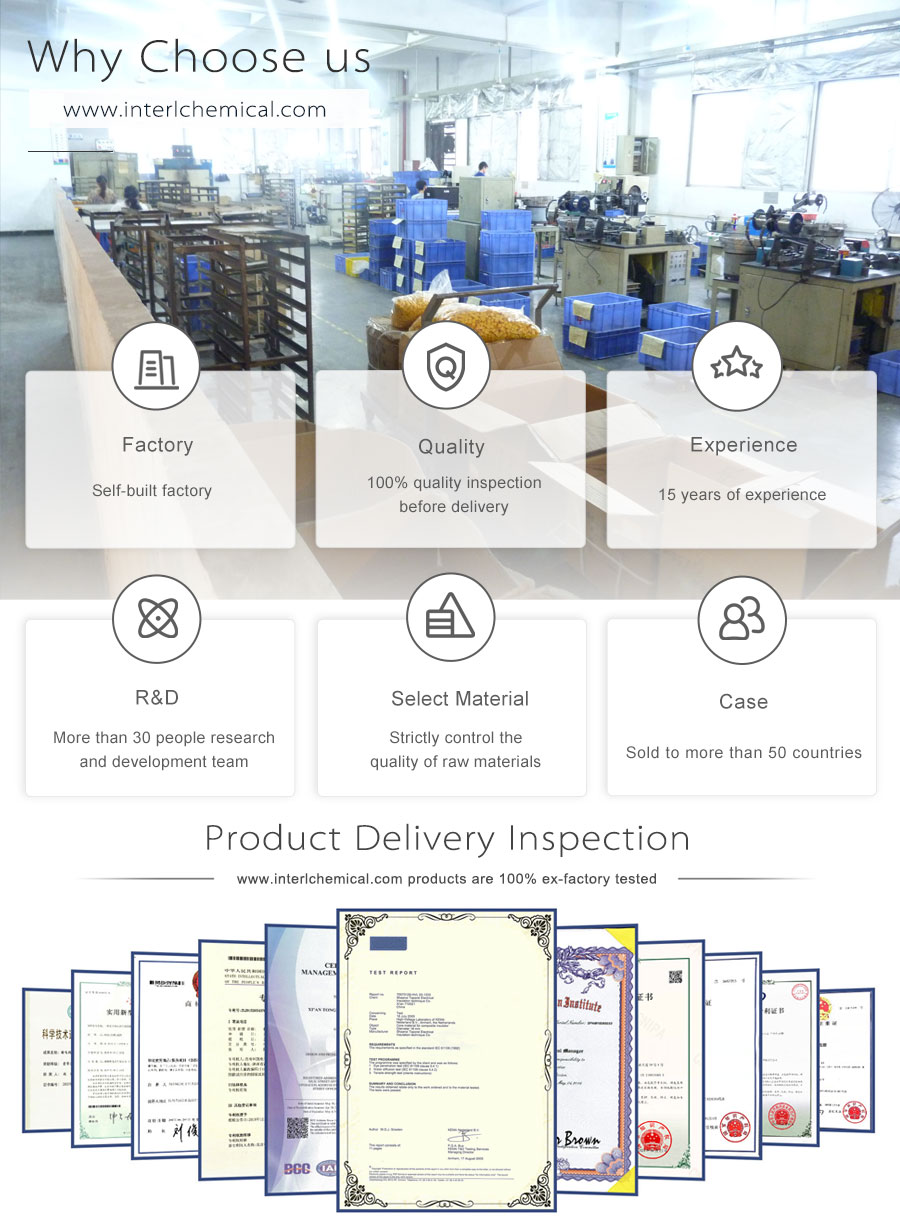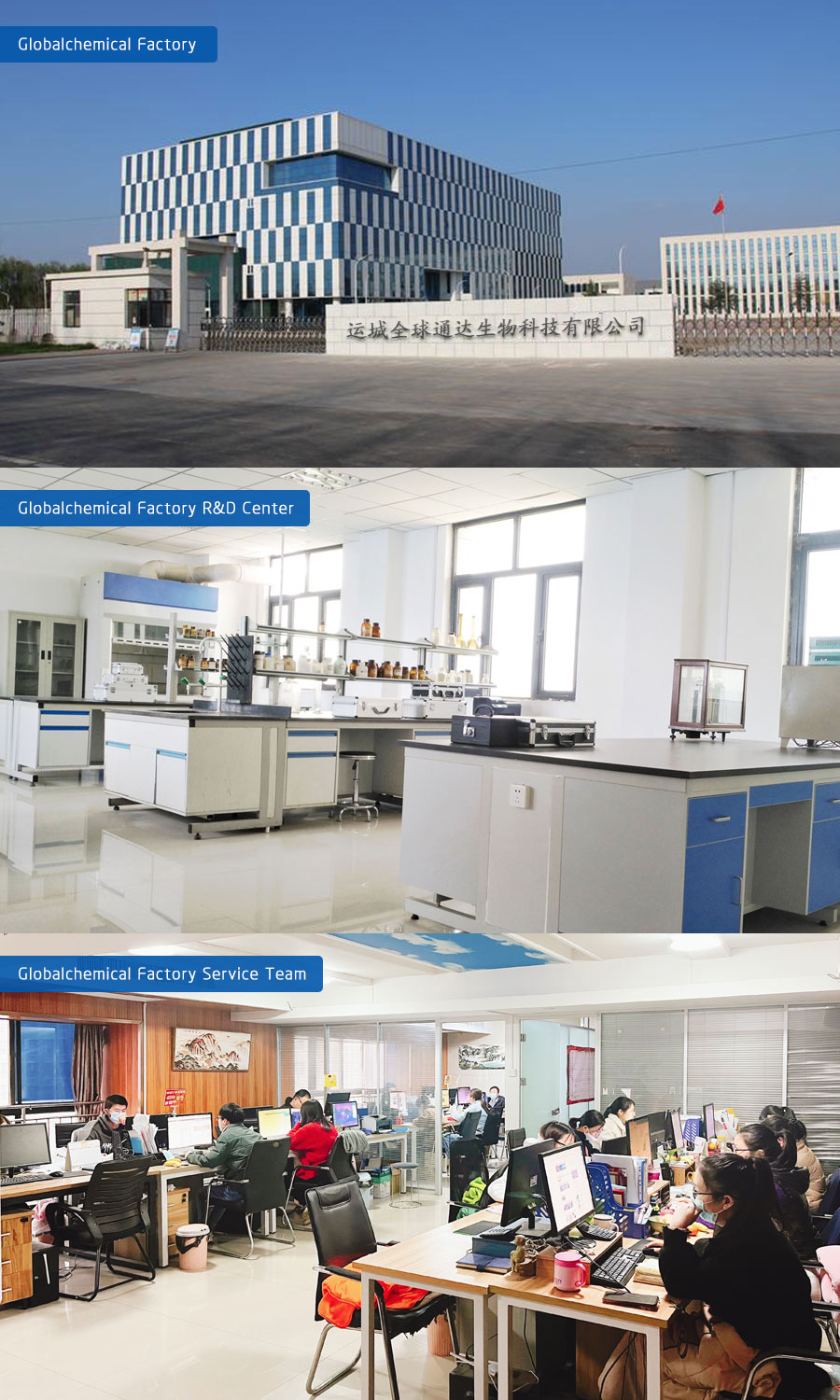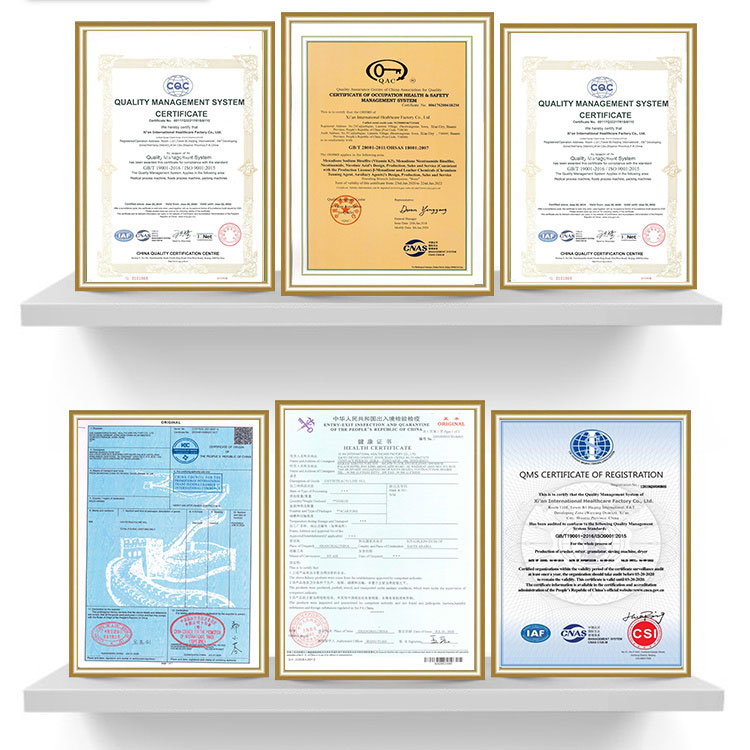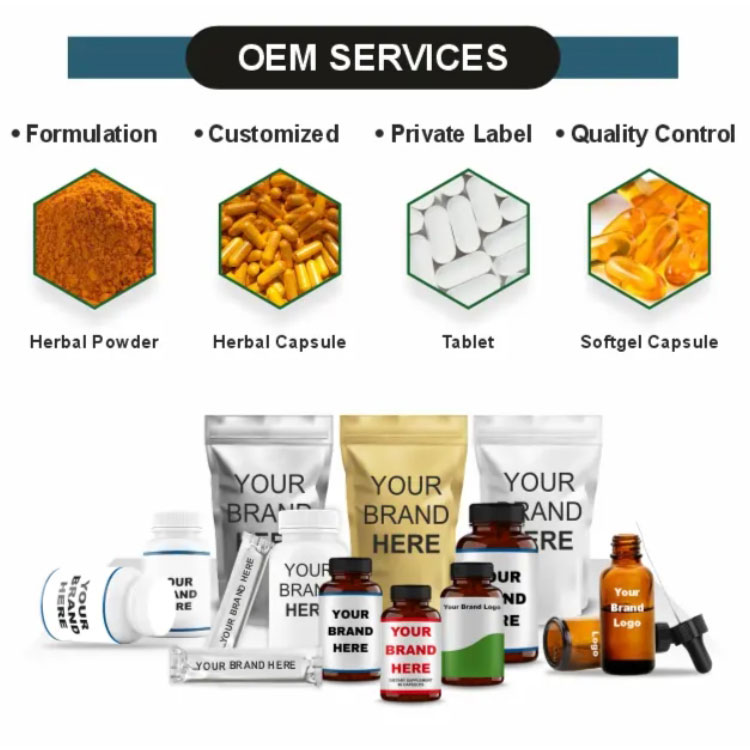Phone: 86-29-89601602
Mail: sales27@interlgroup.com
Add: Room 305 , 3/F , Haipai Decoration Office Building , Yudu Avenue , Yuncheng , Shanxi
Aprepitant powder Raw Materials CAS 170729-80-3
Product Overview:
Aprepitant powder is a neurokinin-1 (NK-1) receptor antagonist, which belongs to the anti-cancer chemotherapy and vomiting treatment drug. Aprepitant CAS 170729-80-3 has a highly selective affinity for humans, but a low affinity for serotonin, dopamine and corticosteroids receptors. Aprepitant Raw Materials can selectively prevent the binding of substance P and NK-1 receptor in the central nervous system and play an antiemesis role, which is used for nausea and vomiting caused by moderate and high emesis chemotherapy drugs.
Aprepitant powder Raw Materials CAS 170729-80-3 Attributes
Aprepitant powder Raw Materials CAS 170729-80-3
MF:C23H21F7N4O3

MW:534.43
EINECS:677-636-6
Specification:99% min Aprepitant powder
Sample:Aprepitant powder
Appearance:white powder
Storage: Cool Dry Place
Brand: Ausreson
Shelf Life: 2 Years
Test Method: HPLC
Aprepitant powder Raw Materials CAS 170729-80-3 Details
Uses and synthesis of Aprepitant powder
Aprepitant powder is a neurokinin-1 (NK-1) receptor antagonist, which belongs to the anti-cancer chemotherapy and vomiting treatment drug. Aprepitant CAS 170729-80-3 has a highly selective affinity for humans, but a low affinity for serotonin, dopamine and corticosteroids receptors. Aprepitant Raw Materials can selectively prevent the binding of substance P and NK-1 receptor in the central nervous system and play an antiemesis role, which is used for nausea and vomiting caused by moderate and high emesis chemotherapy drugs.
Applications/Functions of Aprepitant powder
Aprepitant powder can selectively prevent the binding of substance P and NK-1 receptor in the central nervous system and play an antiemetic role, which is used for nausea and vomiting caused by moderate and high emetic chemotherapy drugs.
1. Antiemetic effect
Acute and delayed CINV: By selectively blocking NK-1 receptors in the brain, the incidence of nausea and vomiting within 24 hours (acute phase) and 24-120 hours (delayed phase) after chemotherapy is significantly reduced.
Combination therapy enhancement: Combined with 5-HT3 receptor antagonists (such as ondansetron) and dexamethasone, the complete remission rate can be further improved.
2. Other potential applications
Anticough effect: Clinical studies have shown that it may have a certain effect on relieving cough symptoms in patients with lung cancer.
Adjuvant treatment for depression: Because NK-1 receptors are related to substance P, it has been explored for major depression (with anxiety).
3. Pharmacological properties
High selectivity: It has a strong affinity for NK-1 receptors, but has little effect on 5-HT3 and dopamine receptors.
Metabolism and safety: It is mainly metabolized by CYP3A4, and common side effects are mild fatigue or headache
Pharmacological Action of Aprepitant powder
1. Core mechanism of action
NK-1 receptor antagonism: Highly selectively blocks NK-1 receptors in the brain, inhibits the activity of substance P (a neurotransmitter associated with vomiting reflex), thereby reducing nausea and vomiting signal transmission
Blood-brain barrier penetration: It can effectively penetrate the blood-brain barrier and directly act on the NK-1 receptors of the central nervous system, with a significantly higher affinity than NK-2/NK-3 receptors and other antiemetic drug targets (such as 5-HT3, dopamine receptors).
2. Synergistic effect
Combined with 5-HT3 receptor antagonists (such as ondansetron) and dexamethasone, it can significantly improve the complete remission rate of acute and delayed nausea and vomiting (24-120 hours) after chemotherapy or surgery.
3. Pharmacokinetic properties
Metabolic pathway: Mainly metabolized by CYP3A4 enzyme, a small part depends on CYP1A2 and CYP2C9, and the metabolites have no significant activity.
Protein binding rate: up to 95%, large distribution volume (about 70 L), indicating that it is widely distributed in tissues.
4. Other potential effects
Studies have shown that it may have a certain regulatory effect on substance P-mediated depression, inflammatory pain, etc., but its main clinical application is still concentrated in the field of antiemetics
Production methodprocess of Aprepitant powder
2-(R)-[1-(R)-[3, 5-bis (tetrafluoromethyl) phenyl] ethoxy]-3-(S)-(4-fluorophenyl) morpholine (R) camphor sulfonate and potassium carbonate dissolved in dimethylformamide, adding dimethylformamide solution of 3-chloromethyl-1,2, 4-triazoline-5-one at 22℃, stirring, adding water, and cooling with ice bath. The crystals were collected by filtration, washed and dried to obtain Aprepitant CAS 170729-80-3.
1. Synthesis of key intermediates
(2R,3S)-2-[(1R)-1-[3,5-bis(trifluoromethyl)phenyl]ethoxy]-3-(4-fluorophenyl)morpholine hydrochloride
This intermediate is the core of the synthesis of aprepitant, and the construction of its chiral center is achieved by the following steps:
Using p-fluorophenylacetic acid as the raw material, after activation with trimethylacetyl chloride, it reacts with 4-(S)-benzyl-2-oxazolidinone lithium salt to generate an amide-like intermediate.
The C-2 and C-3 chiral centers of the morpholine ring are constructed by a stereoselective reaction mediated by KHMDS (potassium hexamethyldisilazide).
(R)-1-[3,5-bis(trifluoromethyl)phenyl]ethanol
The synthesis method of the racemate includes:
Sodium borohydride reduction method: 3,5-bis(trifluoromethyl)acetophenone is reduced in methanol by NaBH4/NaOH, neutralized with hydrochloric acid, and then extracted and purified.
Catalytic hydrogenation method: hydrogenation in methanol using Pd/C catalyst, reacting at a pressure of 2.5 MPa for 4 hours.
2. Coupling and modification of the final step
The key intermediate is connected with the 1,2,4-triazole-3-one derivative through a substitution reaction to finally form the molecular structure of aprepitant.
The improved process proposed by Shanghai Yaotan adopts a Boc protection strategy to increase the yield through the substitution reaction of compound 13-1 or 13-2 with compound 6, which is more suitable for industrial production.
3. Process optimization direction
Yield improvement: Aster Biopharmaceuticals has optimized the utilization rate of raw materials by improving the preparation method of 2-(piperidin-2-yl)-2-(p-tolyl) methyl acetate hydrochloride (three-step reaction).
Green chemistry: Some routes try to reduce the use of toxic reagents (such as nitrobenzene), but the yield and safety need to be balanced











